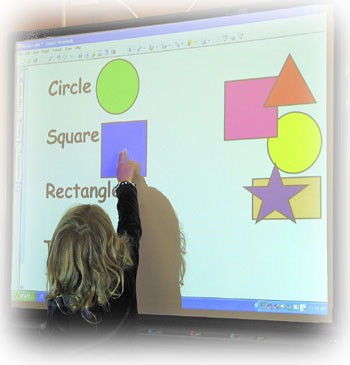With
strong visual components, the interactive board is invaluable when it comes to
teaching math concepts. Nonetheless, teachers who are unfamiliar with this sort
of technology may have difficulty knowing exactly where to begin. In this
article, we will share some smart tips to help you teach math using your interactive
board.
1. Angles & Circles
Teaching angle measuring
techniques is a breeze with the "interactive angle" tool. This is a
virtual manipulative tool that enables students to build obtuse angles, acute
angles and right angles. Students simply change the angle
measurement by five or ten degrees at a go. The interactive nature of this tool
makes learning how to measure angles fun and interesting. The
"interactive circle" tool also helps students visualize the relationships
of the center, diameter and radius of a circle. A student can plot a point on a
circle by clicking it, set the radius to create a circle. With this strong visual support, students should have no problem
explaining the relationship between the diameter and the radius of a circle.
2. Patterns
The "pattern
tool" is excellent for creating patterns using rectangles and triangles.
You can begin by creating two rows of the shapes showing pattern growth
originating from just one rectangle and one triangle. Rectangles and triangles
can be added to build on the pattern. Students can take turns at the interactive
board dragging shapes in place to complete each pattern row.
3. Graphs
There is also an
excellent line graph tool available that is very helpful for graphing daily
temperature. This is a great way to demonstrate the way in which line graphs
can change with the passage of time. You can make a table of high temperatures
throughout the week. Then you can drag and drop points within a grid and create
a graph.
The strong visual support and interactive nature of these exercises coupled
with whole class involvement helps breathe new life into a rather dry subject.
While using these tools may take a bit of practice at first, once you catch on
you will surely appreciate the way they help encourage student involvement and
enthusiasm while providing clear instruction.
Previous:3 Excellent Tools Teachers Can Use To Create a Smart Classroom
Next:New Ideas for IWBs in the Classroom

